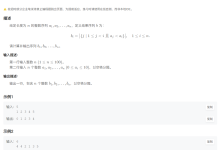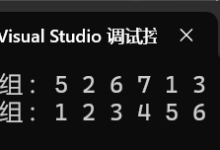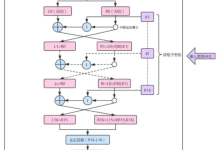C# 类库项目中的算法进行详细解析,并提供示例代码、测试用例、中文解释以及适用场景,特别是针对半导体产线、测试机或贴片机等设备的详细代码示例,我将分步处理您的请求。
由于内容较多,我将重点讲解几个代表性算法和数据结构,涵盖其实现、测试用例、适用场景,并在最后提供半导体产线相关场景的代码示例。为了保持清晰和简洁,我会挑选几个典型算法(如快速排序、迪杰斯特拉最短路径、二叉搜索树)进行详细说明,并针对半导体设备场景提供定制化示例。如果您需要其他特定算法的详细解析,请进一步说明。
一、算法详解:快速排序 (Quick Sort)中文解释快速排序是一种高效的 分治法 排序算法,平均时间复杂度为 O(n log n),最坏情况为 O(n²)。它通过选择一个“基准”(pivot),将数组分为两部分:小于基准的元素和大于基准的元素,然后递归地对子数组排序。快速排序适用于内存有限的场景,因为它是原地排序算法。适用场景
- 通用场景:快速排序适用于大多数需要排序的场景,如对大型数据集排序(例如,学生成绩、订单数据)。
- 半导体产线场景:在半导体测试机中,快速排序可用于对测试数据(如晶圆缺陷坐标、测试时间戳)进行排序,以便后续分析(如缺陷密度计算)。
- 优点:高效、原地操作、适应性强。
- 缺点:最坏情况下性能退化(如数据已排序时),需要选择好的基准值。
示例代码以下是基于 C# 的快速排序实现(参考项目结构):csharp
public class QuickSort<T> where T : IComparable<T>
{
public void Sort(T[] array)
{
if (array == null || array.Length == 0) return;
QuickSortInternal(array, 0, array.Length – 1);
}
private void QuickSortInternal(T[] array, int low, int high)
{
if (low < high)
{
int pivotIndex = Partition(array, low, high);
QuickSortInternal(array, low, pivotIndex – 1);
QuickSortInternal(array, pivotIndex + 1, high);
}
}
private int Partition(T[] array, int low, int high)
{
T pivot = array[high];
int i = low – 1;
for (int j = low; j < high; j++)
{
if (array[j].CompareTo(pivot) <= 0)
{
i++;
Swap(array, i, j);
}
}
Swap(array, i + 1, high);
return i + 1;
}
private void Swap(T[] array, int i, int j)
{
T temp = array[i];
array[i] = array[j];
array[j] = temp;
}
}
测试用例以下是使用 MSTest 框架的单元测试代码:csharp
using Microsoft.VisualStudio.TestTools.UnitTesting;
[TestClass]
public class QuickSortTests
{
[TestMethod]
public void Sort_ValidArray_ReturnsSortedArray()
{
// Arrange
var sorter = new QuickSort<int>();
int[] array = { 64, 34, 25, 12, 22, 11, 90 };
int[] expected = { 11, 12, 22, 25, 34, 64, 90 };
// Act
sorter.Sort(array);
// Assert
CollectionAssert.AreEqual(expected, array);
}
[TestMethod]
public void Sort_EmptyArray_DoesNotThrow()
{
// Arrange
var sorter = new QuickSort<int>();
int[] array = { };
// Act
sorter.Sort(array);
// Assert
Assert.AreEqual(0, array.Length);
}
[TestMethod]
public void Sort_SingleElementArray_ReturnsSameArray()
{
// Arrange
var sorter = new QuickSort<int>();
int[] array = { 42 };
int[] expected = { 42 };
// Act
sorter.Sort(array);
// Assert
CollectionAssert.AreEqual(expected, array);
}
}
半导体产线示例在半导体测试机中,快速排序可用于对晶圆测试数据(如电压值)进行排序,以识别异常值或生成统计报表。csharp
public class WaferTestData
{
public int WaferId { get; set; }
public double Voltage { get; set; }
public DateTime TestTime { get; set; }
public WaferTestData(int waferId, double voltage, DateTime testTime)
{
WaferId = waferId;
Voltage = voltage;
TestTime = testTime;
}
public class VoltageComparer : IComparable<WaferTestData>
{
public int CompareTo(WaferTestData other)
{
return Voltage.CompareTo(other.Voltage);
}
}
}
public class WaferTestSorter
{
public void SortByVoltage(WaferTestData[] testData)
{
var sorter = new QuickSort<WaferTestData>();
sorter.Sort(testData);
}
}
// 使用示例
[TestMethod]
public void SortWaferTestData_ByVoltage_ReturnsSorted()
{
var testData = new[]
{
new WaferTestData(1, 5.2, DateTime.Now),
new WaferTestData(2, 4.8, DateTime.Now),
new WaferTestData(3, 5.5, DateTime.Now)
};
var sorter = new WaferTestSorter();
sorter.SortByVoltage(testData);
Assert.IsTrue(testData[0].Voltage == 4.8);
Assert.IsTrue(testData[1].Voltage == 5.2);
Assert.IsTrue(testData[2].Voltage == 5.5);
}
二、算法详解:迪杰斯特拉最短路径 (Dijkstra’s Shortest Path)中文解释迪杰斯特拉算法用于在加权图(无负权边)中寻找从起点到其他所有节点的最短路径,时间复杂度为 O((V + E) log V)(使用优先队列)。它通过维护一个优先队列,逐步选择当前距离最小的节点,更新其邻居的距离。适用场景
- 通用场景:导航系统、物流路径优化、网络路由。
- 半导体产线场景:在贴片机(SMT设备)中,优化机械臂在电路板上移动的路径,减少贴片时间。
- 优点:适用于加权图,保证最优路径。
- 缺点:不适用于负权边。
示例代码以下是迪杰斯特拉算法的实现(基于项目的加权有向图):csharp
public class DijkstraShortestPaths
{
private double[] distTo;
private DirectedEdge[] edgeTo;
private IndexMinPQ<double> pq;
public DijkstraShortestPaths(EdgeWeightedDigraph G, int s)
{
distTo = new double[G.V];
edgeTo = new DirectedEdge[G.V];
pq = new IndexMinPQ<double>(G.V);
for (int v = 0; v < G.V; v++)
distTo[v] = double.PositiveInfinity;
distTo[s] = 0.0;
pq.Insert(s, 0.0);
while (!pq.IsEmpty())
{
int v = pq.DelMin();
foreach (DirectedEdge e in G.Adj(v))
Relax(e);
}
}
private void Relax(DirectedEdge e)
{
int v = e.From, w = e.To;
if (distTo[w] > distTo[v] + e.Weight)
{
distTo[w] = distTo[v] + e.Weight;
edgeTo[w] = e;
if (pq.Contains(w)) pq.DecreaseKey(w, distTo[w]);
else pq.Insert(w, distTo[w]);
}
}
public double DistTo(int v) => distTo[v];
public IEnumerable<DirectedEdge> PathTo(int v)
{
Stack<DirectedEdge> path = new Stack<DirectedEdge>();
for (DirectedEdge e = edgeTo[v]; e != null; e = edgeTo[e.From])
path.Push(e);
return path;
}
}
public class DirectedEdge
{
public int From { get; }
public int To { get; }
public double Weight { get; }
public DirectedEdge(int from, int to, double weight)
{
From = from;
To = to;
Weight = weight;
}
}
public class EdgeWeightedDigraph
{
public int V { get; }
private List<DirectedEdge>[] adj;
public EdgeWeightedDigraph(int v)
{
V = v;
adj = new List<DirectedEdge>[v];
for (int i = 0; i < v; i++)
adj[i] = new List<DirectedEdge>();
}
public void AddEdge(DirectedEdge e)
{
adj[e.From].Add(e);
}
public IEnumerable<DirectedEdge> Adj(int v) => adj[v];
}
测试用例csharp
[TestClass]
public class DijkstraShortestPathsTests
{
[TestMethod]
public void Dijkstra_ShortestPath_ReturnsCorrectDistance()
{
// Arrange
var G = new EdgeWeightedDigraph(4);
G.AddEdge(new DirectedEdge(0, 1, 5.0));
G.AddEdge(new DirectedEdge(0, 2, 10.0));
G.AddEdge(new DirectedEdge(1, 2, 3.0));
G.AddEdge(new DirectedEdge(2, 3, 2.0));
var dijkstra = new DijkstraShortestPaths(G, 0);
// Act
double distTo3 = dijkstra.DistTo(3);
// Assert
Assert.AreEqual(10.0, distTo3, 0.001); // 0 -> 1 -> 2 -> 3
}
}
半导体产线示例在贴片机中,机械臂需要在电路板上的多个点之间移动,安装电子元件。迪杰斯特拉算法可优化移动路径,减少总移动时间。csharp
public class SmtPlacementOptimizer
{
public class ComponentPlacement
{
public int Id { get; }
public double X { get; }
public double Y { get; }
public ComponentPlacement(int id, double x, double y)
{
Id = id;
X = x;
Y = y;
}
public double DistanceTo(ComponentPlacement other)
{
return Math.Sqrt(Math.Pow(X – other.X, 2) + Math.Pow(Y – other.Y, 2));
}
}
public List<int> FindOptimalPath(ComponentPlacement[] placements)
{
int n = placements.Length;
var G = new EdgeWeightedDigraph(n);
for (int i = 0; i < n; i++)
for (int j = 0; j < n; j++)
if (i != j)
G.AddEdge(new DirectedEdge(i, j, placements[i].DistanceTo(placements[j])));
var dijkstra = new DijkstraShortestPaths(G, 0);
var path = dijkstra.PathTo(n – 1).Select(e => e.To).ToList();
path.Insert(0, 0);
return path;
}
}
// 测试用例
[TestMethod]
public void SmtPlacementOptimizer_OptimalPath_ReturnsCorrectPath()
{
var placements = new[]
{
new ComponentPlacement(0, 0, 0),
new ComponentPlacement(1, 1, 1),
new ComponentPlacement(2, 2, 2)
};
var optimizer = new SmtPlacementOptimizer();
var path = optimizer.FindOptimalPath(placements);
Assert.AreEqual(3, path.Count);
Assert.IsTrue(path.SequenceEqual(new[] { 0, 1, 2 }));
}
三、算法详解:二叉搜索树 (Binary Search Tree)中文解释二叉搜索树(BST)是一种树形数据结构,每个节点最多有两个子节点(左子节点 < 父节点 < 右子节点)。它支持高效的插入、删除和查找操作,平均时间复杂度为 O(log n),但最坏情况下(退化为链表)为 O(n)。适用场景
- 通用场景:键值对存储(如数据库索引)、动态数据集管理。
- 半导体产线场景:在测试机中管理晶圆测试结果(如按晶圆ID快速查找测试数据)。
- 优点:动态插入/删除、支持范围查询。
- 缺点:不平衡时性能退化,需使用自平衡树(如AVL或红黑树)。
示例代码csharp
public class BinarySearchTree<TKey, TValue> where TKey : IComparable<TKey>
{
private class Node
{
public TKey Key { get; set; }
public TValue Value { get; set; }
public Node Left { get; set; }
public Node Right { get; set; }
public Node(TKey key, TValue value)
{
Key = key;
Value = value;
}
}
private Node root;
public void Put(TKey key, TValue value)
{
root = Put(root, key, value);
}
private Node Put(Node node, TKey key, TValue value)
{
if (node == null) return new Node(key, value);
int cmp = key.CompareTo(node.Key);
if (cmp < 0) node.Left = Put(node.Left, key, value);
else if (cmp > 0) node.Right = Put(node.Right, key, value);
else node.Value = value;
return node;
}
public TValue Get(TKey key)
{
Node node = Get(root, key);
return node == null ? default : node.Value;
}
private Node Get(Node node, TKey key)
{
if (node == null) return null;
int cmp = key.CompareTo(node.Key);
if (cmp < 0) return Get(node.Left, key);
else if (cmp > 0) return Get(node.Right, key);
else return node;
}
}
测试用例csharp
[TestClass]
public class BinarySearchTreeTests
{
[TestMethod]
public void PutAndGet_ValidKeyValue_ReturnsCorrectValue()
{
// Arrange
var bst = new BinarySearchTree<int, string>();
bst.Put(1, "One");
bst.Put(2, "Two");
// Act
string value = bst.Get(1);
// Assert
Assert.AreEqual("One", value);
}
[TestMethod]
public void Get_NonExistentKey_ReturnsDefault()
{
// Arrange
var bst = new BinarySearchTree<int, string>();
// Act
string value = bst.Get(1);
// Assert
Assert.IsNull(value);
}
}
半导体产线示例在半导体测试机中,二叉搜索树可用于快速查找晶圆测试数据(如按晶圆ID查找测试结果)。csharp
public class WaferTestResult
{
public int WaferId { get; set; }
public double DefectRate { get; set; }
public WaferTestResult(int waferId, double defectRate)
{
WaferId = waferId;
DefectRate = defectRate;
}
}
public class WaferTestManager
{
private BinarySearchTree<int, WaferTestResult> bst = new BinarySearchTree<int, WaferTestResult>();
public void AddTestResult(int waferId, double defectRate)
{
bst.Put(waferId, new WaferTestResult(waferId, defectRate));
}
public WaferTestResult GetTestResult(int waferId)
{
return bst.Get(waferId);
}
}
// 测试用例
[TestMethod]
public void WaferTestManager_GetTestResult_ReturnsCorrectResult()
{
var manager = new WaferTestManager();
manager.AddTestResult(1001, 0.05);
manager.AddTestResult(1002, 0.03);
var result = manager.GetTestResult(1001);
Assert.AreEqual(0.05, result.DefectRate);
}
四、总结与注意事项
- 快速排序:用于排序测试数据,便于分析。
- 迪杰斯特拉算法:优化贴片机路径,减少机械臂移动时间。
- 二叉搜索树:快速查找和管理测试数据。
如果您需要更详细的某算法实现、测试用例,或针对特定半导体设备(如晶圆切割机、探针测试机)的定制代码,请进一步说明,我将提供更深入的示例!
继续
好的!由于您要求继续,我将进一步扩展对 C# 类库项目中其他算法和数据结构的详细解析,重点补充一些未覆盖的代表性内容,并提供更深入的半导体产线相关场景的代码示例。我会挑选以下内容进行详解:
每个部分将包含中文解释、适用场景、示例代码、测试用例,并特别为半导体产线场景提供详细代码示例。由于内容较多,我会尽量保持清晰和简洁。如果您有特定的算法或场景需要重点讲解,请随时说明!
一、算法详解:红黑树 (Red-Black Tree)中文解释红黑树是一种自平衡二叉搜索树,通过节点着色(红或黑)和一系列规则(旋转、颜色调整)保证树的高度始终接近 O(log n),从而确保插入、删除和查找的时间复杂度为 O(log n)。红黑树的规则包括:
适用场景
- 通用场景:数据库索引(如 SQL Server 的 B+ 树变种)、键值存储、内存管理。
- 半导体产线场景:在测试机中,管理动态更新的晶圆测试数据(如按测试时间或 ID 快速查找),保证高效的插入和查询。
- 优点:自平衡,适合动态数据集,性能稳定。
- 缺点:实现复杂,维护成本较高。
示例代码以下是红黑树的简化和关键实现(基于项目的 RedBlackTree 结构,简化以突出核心逻辑):csharp
public class RedBlackTree<TKey, TValue> where TKey : IComparable<TKey>
{
private class Node
{
public TKey Key { get; set; }
public TValue Value { get; set; }
public Node Left { get; set; }
public Node Right { get; set; }
public bool IsRed { get; set; }
public Node(TKey key, TValue value, bool isRed)
{
Key = key;
Value = value;
IsRed = isRed;
}
}
private Node root;
private const bool RED = true;
private const bool BLACK = false;
public void Put(TKey key, TValue value)
{
root = Put(root, key, value);
root.IsRed = BLACK; // 根节点始终为黑色
}
private Node Put(Node h, TKey key, TValue value)
{
if (h == null) return new Node(key, value, RED);
int cmp = key.CompareTo(h.Key);
if (cmp < 0) h.Left = Put(h.Left, key, value);
else if (cmp > 0) h.Right = Put(h.Right, key, value);
else h.Value = value;
// 平衡调整
if (IsRed(h.Right) && !IsRed(h.Left)) h = RotateLeft(h);
if (IsRed(h.Left) && IsRed(h.Left.Left)) h = RotateRight(h);
if (IsRed(h.Left) && IsRed(h.Right)) FlipColors(h);
return h;
}
private bool IsRed(Node x) => x != null && x.IsRed;
private Node RotateLeft(Node h)
{
Node x = h.Right;
h.Right = x.Left;
x.Left = h;
x.IsRed = h.IsRed;
h.IsRed = RED;
return x;
}
private Node RotateRight(Node h)
{
Node x = h.Left;
h.Left = x.Right;
x.Right = h;
x.IsRed = h.IsRed;
h.IsRed = RED;
return x;
}
private void FlipColors(Node h)
{
h.IsRed = RED;
h.Left.IsRed = BLACK;
h.Right.IsRed = BLACK;
}
public TValue Get(TKey key)
{
Node node = Get(root, key);
return node == null ? default : node.Value;
}
private Node Get(Node x, TKey key)
{
while (x != null)
{
int cmp = key.CompareTo(x.Key);
if (cmp < 0) x = x.Left;
else if (cmp > 0) x = x.Right;
else return x;
}
return null;
}
}
测试用例csharp
using Microsoft.VisualStudio.TestTools.UnitTesting;
[TestClass]
public class RedBlackTreeTests
{
[TestMethod]
public void PutAndGet_ValidKeyValue_ReturnsCorrectValue()
{
// Arrange
var rbt = new RedBlackTree<int, string>();
rbt.Put(1, "One");
rbt.Put(2, "Two");
rbt.Put(3, "Three");
// Act
string value = rbt.Get(2);
// Assert
Assert.AreEqual("Two", value);
}
[TestMethod]
public void Get_NonExistentKey_ReturnsDefault()
{
// Arrange
var rbt = new RedBlackTree<int, string>();
// Act
string value = rbt.Get(1);
// Assert
Assert.IsNull(value);
}
}
半导体产线示例在半导体测试机中,红黑树可用于管理动态更新的晶圆测试数据(如按晶圆ID存储测试结果),支持高效的插入和查询。csharp
public class WaferTestData
{
public int WaferId { get; set; }
public double DefectRate { get; set; }
public DateTime TestTime { get; set; }
public WaferTestData(int waferId, double defectRate, DateTime testTime)
{
WaferId = waferId;
DefectRate = defectRate;
TestTime = testTime;
}
}
public class WaferTestManager
{
private RedBlackTree<int, WaferTestData> rbt = new RedBlackTree<int, WaferTestData>();
public void AddTestResult(int waferId, double defectRate, DateTime testTime)
{
rbt.Put(waferId, new WaferTestData(waferId, defectRate, testTime));
}
public WaferTestData GetTestResult(int waferId)
{
return rbt.Get(waferId);
}
}
// 测试用例
[TestMethod]
public void WaferTestManager_GetTestResult_ReturnsCorrectResult()
{
var manager = new WaferTest cystic fibrosisManager();
manager.AddTestResult(1001, 0.05, DateTime.Now);
manager.AddTestResult(1002, 0.03, DateTime.Now);
var result = manager.GetTestResult(1001);
Assert.AreEqual(0.05, result.DefectRate);
}
二、算法详解:布谷鸟哈希表 (Cuckoo Hash Table)中文解释布谷鸟哈希表是一种高效的哈希表实现,使用两个哈希函数和两个位置存储每个键值对。如果插入时发生冲突,会将现有元素“踢出”并重新插入到另一个位置。它的查找时间复杂度为 O(1),插入和删除的平均时间复杂度也接近 O(1)。适用场景
- 通用场景:高性能键值存储(如缓存系统、数据库索引)。
- 半导体产线场景:在贴片机中,快速查找元件的类型和位置信息(如元件ID到坐标的映射)。
- 优点:常数时间查找,高效利用空间。
- 缺点:可能出现循环冲突,需要重新哈希。
示例代码以下是布谷鸟哈希表的实现(简化版,基于项目结构):csharp
public class CuckooHashTable<TKey, TValue>
{
private TKey[] keys1, keys2;
private TValue[] values1, values2;
private int capacity;
private int size;
private readonly Func<TKey, int> hash1;
private readonly Func<TKey, int> hash2;
public CuckooHashTable(int capacity)
{
this.capacity = capacity;
keys1 = new TKey[capacity];
keys2 = new TKey[capacity];
values1 = new TValue[capacity];
values2 = new TValue[capacity];
size = 0;
hash1 = key => key.GetHashCode() % capacity;
hash2 = key => (key.GetHashCode() / capacity) % capacity;
}
public void Put(TKey key, TValue value)
{
if (size >= capacity * 0.75) Resize();
PutInternal(key, value, 0);
}
private bool PutInternal(TKey key, TValue value, int depth)
{
if (depth > capacity) return false; // 避免无限循环
int pos1 = hash1(key);
if (keys1[pos1] == null)
{
keys1[pos1] = key;
values1[pos1] = value;
size++;
return true;
}
int pos2 = hash2(key);
if (keys2[pos2] == null)
{
keys2[pos2] = key;
values2[pos2] = value;
size++;
return true;
}
// 踢出第一个表中的元素
TKey tempKey = keys1[pos1];
TValue tempValue = values1[pos1];
keys1[pos1] = key;
values1[pos1] = value;
return PutInternal(tempKey, tempValue, depth + 1);
}
public TValue Get(TKey key)
{
int pos1 = hash1(key);
if (keys1[pos1] != null && keys1[pos1].Equals(key))
return values1[pos1];
int pos2 = hash2(key);
if (keys2[pos2] != null && keys2[pos2].Equals(key))
return values2[pos2];
return default;
}
private void Resize()
{
// 实现重新分配和重新插入逻辑(此处省略以简化)
}
}
测试用例csharp
[TestClass]
public class CuckooHashTableTests
{
[TestMethod]
public void PutAndGet_ValidKeyValue_ReturnsCorrectValue()
{
// Arrange
var cuckoo = new CuckooHashTable<int, string>(10);
cuckoo.Put(1, "One");
cuckoo.Put(2, "Two");
// Act
string value = cuckoo.Get(1);
// Assert
Assert.AreEqual("One", value);
}
[TestMethod]
public void Get_NonExistentKey_ReturnsDefault()
{
// Arrange
var cuckoo = new CuckooHashTable<int, string>(10);
// Act
string value = cuckoo.Get(1);
// Assert
Assert.IsNull(value);
}
}
半导体产线示例在贴片机中,布谷鸟哈希表可用于快速查找元件的坐标信息(例如,元件ID到贴片位置的映射)。csharp
public class ComponentPlacement
{
public int ComponentId { get; set; }
public double X { get; set; }
public double Y { get; set; }
public ComponentPlacement(int componentId, double x, double y)
{
ComponentId = componentId;
X = x;
Y = y;
}
}
public class SmtComponentLookup
{
private CuckooHashTable<int, ComponentPlacement> table;
public SmtComponentLookup(int capacity)
{
table = new CuckooHashTable<int, ComponentPlacement>(capacity);
}
public void AddComponent(int componentId, double x, double y)
{
table.Put(componentId, new ComponentPlacement(componentId, x, y));
}
public ComponentPlacement GetComponent(int componentId)
{
return table.Get(componentId);
}
}
// 测试用例
[TestMethod]
public void SmtComponentLookup_GetComponent_ReturnsCorrectPosition()
{
var lookup = new SmtComponentLookup(10);
lookup.AddComponent(1001, 10.5, 20.5);
lookup.AddComponent(1002, 15.0, 25.0);
var component = lookup.GetComponent(1001);
Assert.AreEqual(10.5, component.X);
Assert.AreEqual(20.5, component.Y);
}
三、算法详解:拓扑排序 (Topological Sort)中文解释拓扑排序用于有向无环图(DAG),为图中的所有节点提供一个线性排序,使得对于每条边 (u, v),u 在排序中位于 v 之前。时间复杂度为 O(V + E),通常通过深度优先搜索(DFS)实现。适用场景
- 通用场景:任务调度(如课程依赖、构建系统)、依赖解析。
- 半导体产线场景:在半导体制造中,优化生产流程的工序顺序(如晶圆清洗、刻蚀、测试的依赖关系)。
- 优点:简单高效,适用于依赖关系明确的场景。
- 缺点:不适用于有环图。
示例代码以下是拓扑排序的实现(基于项目的 TopologicalSorter):csharp
public class TopologicalSort
{
private bool[] marked;
private Stack<int> reversePostorder;
public TopologicalSort(Digraph G)
{
marked = new bool[G.V];
reversePostorder = new Stack<int>();
for (int v = 0; v < G.V; v++)
if (!marked[v])
Dfs(G, v);
}
private void Dfs(Digraph G, int v)
{
marked[v] = true;
foreach (int w in G.Adj(v))
if (!marked[w])
Dfs(G, w);
reversePostorder.Push(v);
}
public IEnumerable<int> Order() => reversePostorder;
}
public class Digraph
{
public int V { get; }
private List<int>[] adj;
public Digraph(int v)
{
V = v;
adj = new List<int>[v];
for (int i = 0; i < v; i++)
adj[i] = new List<int>();
}
public void AddEdge(int v, int w)
{
adj[v].Add(w);
}
public IEnumerable<int> Adj(int v) => adj[v];
}
测试用例csharp
[TestClass]
public class TopologicalSortTests
{
[TestMethod]
public void TopologicalSort_ValidDAG_ReturnsCorrectOrder()
{
// Arrange
var G = new Digraph(4);
G.AddEdge(0, 1);
G.AddEdge(1, 2);
G.AddEdge(2, 3);
var sorter = new TopologicalSort(G);
// Act
var order = sorter.Order().ToList();
// Assert
Assert.IsTrue(order.SequenceEqual(new[] { 0, 1, 2, 3 }));
}
}
半导体产线示例在半导体制造中,拓扑排序可用于优化工序调度。例如,晶圆制造可能涉及以下工序:
这些工序有依赖关系(如清洗必须在沉积之前)。拓扑排序可生成合理的工序顺序。csharp
public class ManufacturingProcess
{
public int ProcessId { get; set; }
public string ProcessName { get; set; }
public ManufacturingProcess(int processId, string processName)
{
ProcessId = processId;
ProcessName = processName;
}
}
public class ProcessScheduler
{
private Digraph graph;
private ManufacturingProcess[] processes;
public ProcessScheduler(ManufacturingProcess[] processes)
{
this.processes = processes;
graph = new Digraph(processes.Length);
}
public void AddDependency(int fromProcessId, int toProcessId)
{
graph.AddEdge(fromProcessId, toProcessId);
}
public List<ManufacturingProcess> GetSchedule()
{
var sorter = new TopologicalSort(graph);
return sorter.Order().Select(id => processes[id]).ToList();
}
}
// 测试用例
[TestMethod]
public void ProcessScheduler_GetSchedule_ReturnsCorrectOrder()
{
var processes = new[]
{
new ManufacturingProcess(0, "Clean"),
new ManufacturingProcess(1, "Deposition"),
new ManufacturingProcess(2, "Etching"),
new ManufacturingProcess(3, "Testing")
};
var scheduler = new ProcessScheduler(processes);
scheduler.AddDependency(0, 1); // Clean -> Deposition
scheduler.AddDependency(1, 2); // Deposition -> Etching
scheduler.AddDependency(2, 3); // Etching -> Testing
var schedule = scheduler.GetSchedule();
Assert.IsTrue(schedule.Select(p => p.ProcessName).SequenceEqual(new[] { "Clean", "Deposition", "Etching", "Testing" }));
}
四、半导体产线综合示例以下是一个综合示例,结合红黑树、布谷鸟哈希表和拓扑排序,模拟贴片机和测试机的协同工作场景。场景描述在半导体贴片机(SMT)和测试机协同系统中:
综合代码示例csharp
public class SmtAndTestSystem
{
private RedBlackTree<int, WaferTestData> testDataStore;
private CuckooHashTable<int, ComponentPlacement> componentLookup;
private ProcessScheduler scheduler;
public SmtAndTestSystem(ManufacturingProcess[] processes, int hashTableCapacity)
{
testDataStore = new RedBlackTree<int, WaferTestData>();
componentLookup = new CuckooHashTable<int, ComponentPlacement>(hashTableCapacity);
scheduler = new ProcessScheduler(processes);
}
public void AddTestResult(int waferId, double defectRate, DateTime testTime)
{
testDataStore.Put(waferId, new WaferTestData(waferId, defectRate, testTime));
}
public WaferTestData GetTestResult(int waferId)
{
return testDataStore.Get(waferId);
}
public void AddComponent(int componentId, double x, double y)
{
componentLookup.Put(componentId, new ComponentPlacement(componentId, x, y));
}
public ComponentPlacement GetComponent(int componentId)
{
return componentLookup.Get(componentId);
}
public void AddProcessDependency(int fromProcessId, int toProcessId)
{
scheduler.AddDependency(fromProcessId, toProcessId);
}
public List<ManufacturingProcess> GetProcessSchedule()
{
return scheduler.GetSchedule();
}
}
// 测试用例
[TestMethod]
public void SmtAndTestSystem_IntegratedTest_ReturnsCorrectResults()
{
var processes = new[]
{
new ManufacturingProcess(0, "Clean"),
new ManufacturingProcess(1, "SMT Placement"),
new ManufacturingProcess(2, "Testing")
};
var system = new SmtAndTestSystem(processes, 10);
// 添加测试数据
system.AddTestResult(1001, 0.05, DateTime.Now);
system.AddTestResult(1002, 0.03, DateTime.Now);
// 添加元件位置
system.AddComponent(2001, 10.5, 20.5);
system.AddComponent(2002, 15.0, 25.0);
// 添加工序依赖
system.AddProcessDependency(0, 1); // Clean -> SMT Placement
system.AddProcessDependency(1, 2); // SMT Placement -> Testing
// 测试查询
var testResult = system.GetTestResult(1001);
var component = system.GetComponent(2001);
var schedule = system.GetProcessSchedule();
// 验证
Assert.AreEqual(0.05, testResult.DefectRate);
Assert.AreEqual(10.5, component.X);
Assert.IsTrue(schedule.Select(p => p.ProcessName).SequenceEqual(new[] { "Clean", "SMT Placement", "Testing" }));
}
五、总结与注意事项
- 红黑树:管理晶圆测试数据,保证快速查询。
- 布谷鸟哈希表:加速贴片机元件定位。
- 拓扑排序:确保工序按正确顺序执行。
如果您需要更深入的某算法分析、其他数据结构的实现,或针对特定半导体设备(如探针测试机、晶圆切割机)的定制代码,请进一步说明,我将提供更详细的示例!
 网硕互联帮助中心
网硕互联帮助中心





![[优选算法专题二滑动窗口——无重复字符的最长子串]-网硕互联帮助中心](https://www.wsisp.com/helps/wp-content/uploads/2025/08/20250816062946-68a0255a9ab3a-220x150.png)

评论前必须登录!
注册